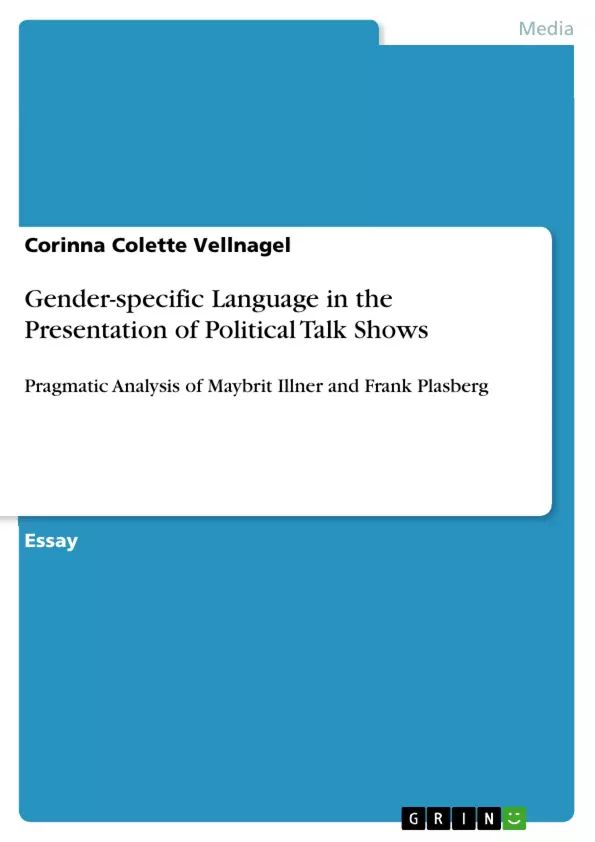Men and women do not only look different, they literally are different from scratch (Gates: 2008). But does this difference also apply to language and talk? 'Women talk more than men!’ – Everybody has already heard of the myth that women are more talkative and use 20,000 words a day, whereas men get by with just 7,000 (Talbot: 2003). However, this has been contradicted by the University of Texas – there is no gender that is more talkative. Moreover, according to the studies, women speak on average 16,215 words and men 15,669 words a day (Mehl et al.: 2007). Language starts in people’s heads, but since the areas and sizes of the different brain parts in women’s and men’s heads are completely unequal it nevertheless is logical that male and female language differs. A female brain has its own relatively big ‘Gossip Lobe’, whereas the male brain has only got a somewhat smaller ‘Guy Talk’ area (see Fig. 1).
According to the amount of research that has been conducted in this field there are major differences between male and female language. Tabloid newspapers and talk shows tend to suggest that women swear less than men or that women are the more gossipy gender. These assumptions are internalised by the vast majority of the population, but are they really true (Coates: 2004)? Or is all that nonsense? The German publishing group Langenscheidt published a dictionary with the title 'German–Woman / Woman–German’ which has especially been created for men so that they can interpret women’s messages correctly. This again shows that male and female language varies.
Inhaltsverzeichnis (Table of Contents)
- Introduction
- Theoretical Background: Female Talk vs. Male Talk
- Deficit Approach
- Dominance Approach
- Difference Approach or Two Cultures Theory
- Dynamic, Social Constructionist or After Difference Approach
- Pragmatic Analysis of Female and Male Presenters of Political Podium Discussions
- Conclusion
Zielsetzung und Themenschwerpunkte (Objectives and Key Themes)
This work examines the pragmatic analysis of gender differences in language by comparing two German talk show presenters. It utilizes a social constructionist understanding of gender, exploring how gender is performed through language.
- The theoretical framework explores different approaches to language and gender, including deficit, dominance, difference, and social constructionist perspectives.
- The work analyzes the language use of two German talk show presenters, Maybrit Illner and Frank Plasberg.
- It examines the pragmatic features of language used in political talk shows.
- The study explores how gender differences are reflected in the presentation of political discussions.
- It aims to contribute to the understanding of gender and language in the context of political discourse.
Zusammenfassung der Kapitel (Chapter Summaries)
- The introduction sets the stage for the study by discussing the myth of women being more talkative than men, and by introducing the concept of gender as a social construction. It lays out the theoretical framework and the methodology used in the analysis.
- The theoretical background chapter delves into four approaches to language and gender: the deficit approach, dominance approach, difference approach, and the dynamic, social constructionist approach. It examines existing literature on gender and language, gender roles, and language differences.
- The pragmatic analysis chapter examines the language use of Frank Plasberg and Maybrit Illner, focusing on how their presentations reflect gender norms and expectations. It incorporates literature on political talk shows and language use in television programs.
Schlüsselwörter (Keywords)
This study focuses on the following key terms and concepts: gender, language, pragmatics, political talk shows, Germany, Maybrit Illner, Frank Plasberg, social constructionism, gender differences, communication, and discourse analysis.
- Citar trabajo
- B.A. Corinna Colette Vellnagel (Autor), 2011, Gender-specific Language in the Presentation of Political Talk Shows , Múnich, GRIN Verlag, https://www.grin.com/document/174789



